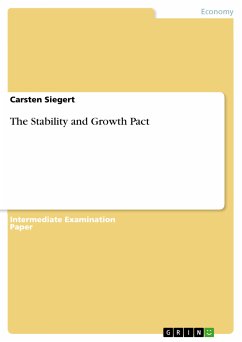Intermediate Examination Paper from the year 2004 in the subject Economics - International Economic Relations, grade: A, University of Applied Sciences Essen (Institute for Economics and Management), language: English, abstract: In December 1991 at a summit in Maastricht the twelve nations, which constituted the European Community at that time, agreed on a treaty to transform the European Community into an European Union (EU). This Treaty was signed 1992 and came effective on November 1st of 1993 as an amendment to the treaty of Rome, the treaty the European Community was build on. Four years later the treaty of Amsterdam put the treaty of Maastricht into more concrete terms. The contracting parties agreed in Article B of this treaty that the Union will set itself (among others) the objective to promote economic and social progress through the establishment of an economicand monetary union (EMU), ultimately including a single currency. Under title V and VI of this treaty the countries also agreed to build up common, foreign- and security policies as well as to intensify their cooperation in fields of justice und home affairs. Title VII defines the ideas of a common economic and monetary policy. The treaty of Amsterdam was signed on October, 2nd 1997. Since all the Member States had to ratify the treaty by their respective legislative procedures, it did not come into effect until the end of May 1999. The European treaties, taken together, form the primary legislation and have characteristics of a constitution of the Community. The treaties provide the legal basis for all secondary legislation, i.e. regulations, directives and decisions of the institutions of the Community. 1 Peichl, Andreas (2003), p. 1-3. 2 Cowgill, Anthony and Andrew (2003b), p. 2.

